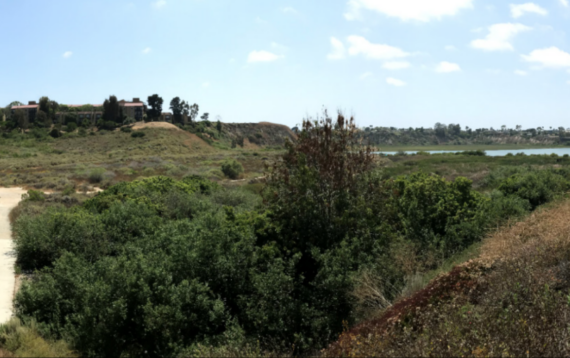Location: Orange County
Project Type: Restoration Planning
Status: Current
Habitat Type: Freshwater Wetland, Riparian, Tidal Wetland
Cost: $7,000,000
Funding Gap: $3,241,000
Area Affected: 9.2 acres
Project Footprint: 0.4 stream miles
Assembly District: 74
Senate District: 37
Congressional District: 48
Project Lead/Grantee:
Newport Bay Conservancy
 For more information, visit scwrp.org
For more information, visit scwrp.org
Big Canyon Nature Park, located between Jamboree Road and Back Bay Drive, has been degraded by numerous well documented impacts and requires habitat restoration and enhancement to improve the site’s biological productivity and ecological function. Big Canyon Nature Park has been subjected to the effects of water quality degradation from upstream development and selenium-laden groundwater seepage, historical land disturbance from grazing and agricultural activities, increased peak-flows during storm events and year-round dry weather flows due to watershed urbanization, increased habitat degradation from invasive plants and insects, and dredge and fill materials placed within the lower canyon marsh plain and riparian areas. Without future intervention, these impacts will continue to degrade the remaining habitats and impact the listed species that have been identified by previous and recent surveys. Phase 3 will restore approximately 14 acres of degraded habitat impacted by dredged material placement, establishment of non-native Brazilian pepper trees and selenium impacted dry weather flows. Phase 3 restoration consists of several components, including restoration of historical salt marsh and establishment of transitional zones that will allow for upslope migration and resiliency to long-term sea level rise. The Project proposes to extend the saltwater influence into the Project limits, resulting in the restoration of tidal marsh, which also further reduces selenium bioavailability found naturally within marine deposits in the watershed. Big Canyon Phase 3 provides an opportunity to support salt marsh areas with future sea-level rise to improve the overall resiliency of salt marsh in Upper Newport Bay. The invasive Brazilian peppertrees (Schinus terebinthifolia) will be removed as part of the salt marsh restoration.
Phase 3 also includes the realignment of the terminus of Big Canyon Creek to maintain positive drainage during low flows to reduce the accumulation of selenium in the soil and vegetation and address mosquito breeding habitat. The freshwater channel re-alignment will establish a riparian corridor that integrates with the upstream restored corridor in Phases 1 and 2. The freshwater channel will also convey dry weather flows away from the planned intertidal salt marsh habitat to maintain the required salinity levels to establish the salt marsh vegetation. Storm flows will still inundate the full marsh plain to maintain the full extent of the existing wetlands. Periodic freshwater inundation of the salt marsh during storm event provides natural hydrology processes that occur in these systems.

